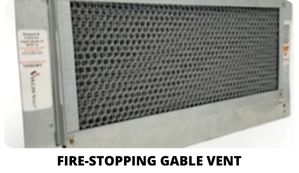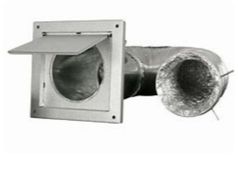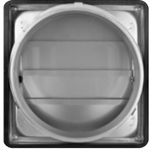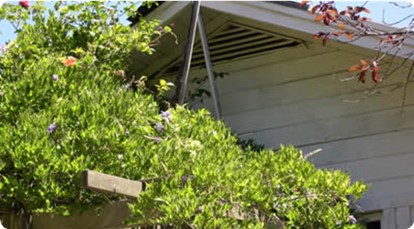Why?
During a wildfire event, embers are sucked into the home via vents and other gaps or holes.
If not properly mitigated, vent openings can serve as access points for embers and flames, which can lead to home ignition.
It’s important to note that embers can be widely dispersed and can fly miles ahead of the flames during a wildfire. Screening these vents using 1/8″ metal screening, or replacing them with wildfire resilient vents is a crucial element of wildfire mitigation best practices.
NOTE: Some vents exhaust the home’s furnace or radon system and should not be modified. If in doubt consult a professional.


How?
Cover or replace any vent that isn‘t exhausting gases and has mesh/gaps over 1/8“ wide.
Hire a contractor, or do it yourself! Basic guidelines:
- Use 1/8″ metal screen mesh that is corrosion resistant and noncombustible.
- Avoid larger (1/4″ + mesh) because it is ineffective at preventing ember incursion.
- Avoid finer mesh because it clogs frequently and can prevent proper circulation.
- Attach mesh over existing vents using screws, staples, or other noncombustible materials.
Many vents come in standard sizes, and can be purchased if you would prefer to replace rather than screen your outdated vents.
Where?
Buy 1/8“ wire mesh – also known as metal screening or hardware cloth – or purchase commercial/manufactured vents.
These products can be found at hardware/home improvement stores and online.
Specialty pre-manufactured fire-resistant vent covers
Ember resistant vents are designed specifically with honeycombs or snake-like patterns inside of the vent to block embers from entering the vent system. There is adequate air flow due to the unique technology behind the vent. These vents are tested and fire rated.


Dryer vents should auto-close when the dryer is off.


Do You Know?
There are various vent products specifically designed to be wildfire resilient. Search terms include “ember resistant” , “fire stopping”, and “fire resistant” vent.
Pay attention to hazards near your vents. If this vegetation ignited, where would flying embers and flames likely travel?

